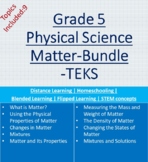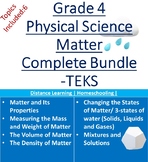Matter and its properties- 3D animation video - Interactive education
- Streaming Video(cannot be downloaded)
Also included in
- This bundle "Energy" contains below 12 topics aligned to the NGSS curriculum. It helps the users to understand the concepts of the chapter "Energy". C3D-Learning also supports the CC, TEKS, VA, and FL curriculum with sub-strands aligned and is visually engaging with high-quality HD animated contentPrice $16.00Original Price $24.28Save $8.28
- This bundle "Matter" contains below 9 topics aligned to the TEKS curriculum. It helps the users to understand the concepts of the chapter "Physical Science". C3D-Learning also supports the CC, NGSS, VA, and FL curriculum with sub-strands aligned and is visually engaging with high-quality HD animatedPrice $12.50Original Price $18.51Save $6.01
- This bundle "Matter" contains below 6 topics aligned to the TEKS curriculum. It helps the users to understand the concepts of the chapter "Physical Science". C3D-Learning also supports the CC, NGSS, VA, and FL curriculum with sub-strands aligned and is visually engaging with high-quality HD animatedPrice $8.00Original Price $12.14Save $4.14
Description
Attention Getting Question:
What do money, milk, and monkeys all have in common? They are all made of matter.
Introduction:
What is Matter?
Matter is anything that has mass and takes up space. Matter is all around you. Look around your classroom. Desks, computers, bottles of glue, and the glue inside of the bottles are all made of matter. In fact, you are made of matter, too.
Subject:
Properties of Matter
Scientists identify and describe matter by determining the properties of matter. A property is a characteristic of a substance. You can identify some properties of matter by using your five senses to observe how an object looks, feels, sounds, smells, or tastes. When you are describing an object by its color, size, shape, or texture, you are telling the properties of that object. Scientists also use tools to measure properties of matter.
States of Matter
When scientists want to describe a substance’s shape and volume (or the amount of space matter takes up), they describe its state. The state of matter is a property of matter that tells the form of the object. Three states of matter are solids, liquids, and gases.
Solids have a definite shape and volume. Solids keep their shape unless a force changes it. A pencil is a solid, but it does change its shape each time it’s sharpened.
Liquids do not have a shape of their own, but they do have a definite volume. Liquids take the shape of their container. When juice is poured from a pitcher into a glass, the shape of the juice changes from that of the pitcher to the glass. The shape is the only thing that changes. The volume remains the same.
Gases do not have shape or volume of their own. They take the shape of their container like liquids do, but they expand to fill whatever space is available. The air you breathe, helium that fills a balloon, and the steam that forms over a boiling pot are all examples of gases. If you blow up a balloon, the gas is contained inside the balloon. If you pop the balloon, the gas inside then disperses into the space around it.
Describing the Properties of an Apple
Let’s take a look at this apple. We can describe it by saying it is a solid because it has a definite shape and takes up space. We can look at it and tell it is red, shiny, and about the size of a baseball. We can hold it and feel it to know that it is smooth to touch and weighs more than a pencil, but less than a textbook. We can bite into it and describe the taste as sweet and the sound as crunchy. We can further investigate the apple to determine its mass or amount of matter in the apple. A balance must be used to measure the mass of an object and mass is measured in units called grams.
Summary:
Matter has many properties that can be observed and described, but all matter has mass and takes up space. One property that can describe an object’s shape and volume is its state. Three states of matter are solids, liquids, and gases. Scientists use their observations to determine properties of matter and you can, too!




